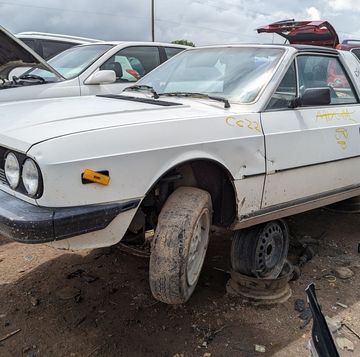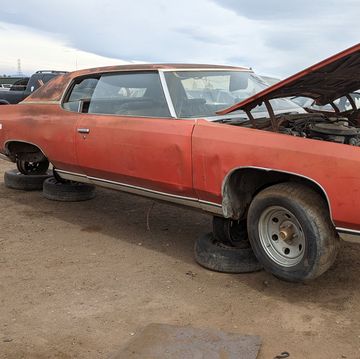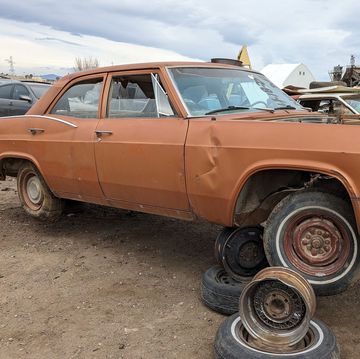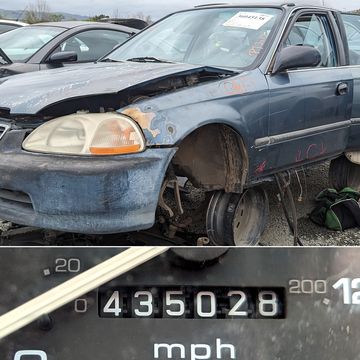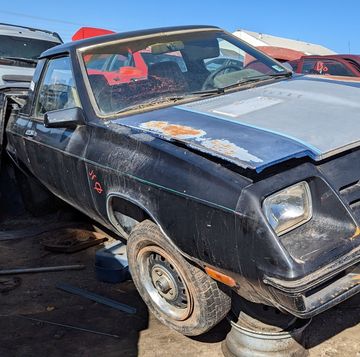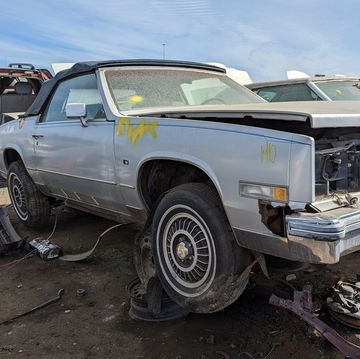For the 1997 model year, General Motors began production of a radical new electric car, the EV1, which was available as a lease-only deal in limited markets. At about the same time, Toyota began building a pure-electric version of the RAV4, which was available (at first) as a lease-only deal to fleet users in California.
The 1997-1999 EV1 and 1997-2003 RAV4 EV were built in similar numbers, but we all know what happened to those EV1s; you'll never find one in your local Ewe Pullet. Toyota didn't object to RAV4 EVs being sold after leases ran out, though, and even offered late-production examples for sale to the general public. That means one thing: Eventually, I might find one during my junkyard travels, and that just happened!
I've just started to see discarded EVs in the big self-service car graveyards I frequent; I expected an early Nissan LEAF to be the first I'd document and—sure enough—I spotted a crashed '11 model in Northern California last fall. Discovering one of just 1484 of the original RAV4 EVs made was a much longer shot. I'd been fairly confident that I'd spot a discarded Fiat 500e or Mitsubishi i-MiEV first.
This car is one of the very first mass-produced EVs of the modern era, built nearly a century after the original period during which electric vehicles could compete straight-up with internal-combustion machinery in the United States and a decade before EVs began sneaking back into American showrooms in significant numbers. Such history! Finding this car at a Pick-n-Pull near the birthplace of John Steinbeck in 2023 is like running across a Benz Patent-Motorwagen in a Pflücken-und-Entfernen on the outskirts of Markgröningen in 1911.
The first-generation RAV4 EV (Toyota built a much more advanced second-generation version from 2012 through 2014) used a nickel-metal hydride (NiMH) battery pack with 27.4 kWh of storage. This beat the early EV1's 18.7-kWh lead-acid battery rig and the revised NiMH-fueled 1999 EV1 and its 26.4 kWh. The present-day crop of EVs uses lithium-ion chemistry in its batteries, but NiMH packs were advanced technology for the late 1990s. The first-generation Honda Insight and Toyota Prius both used NiMH batteries, for example.
The EPA rated this car at 78 MPGe, with a 95-mile range. With a 50-kW (67 hp) motor, it was on the slow side but tolerable on the freeway.
2002 was the only model year for non-fleet buyers (still only in California) to buy a new RAV4 EV outright. The price tag was $42,000, minus the $9000 state rebate and $4000 income-tax credit, making the actual cost $29,000. That comes to about $49,425 in 2023 dollars, and nearly twice as much as a gasoline-fueled '02 RAV4.
This one appears to have been banged up pretty well in a couple of fender-benders, and we can assume the battery pack was tired by the end. The electric motor is still present, attached to the transaxle, so someone wishing to build a fairly quick electric 1992-1995 Honda Civic could do a near-bolt-in powertrain swap.
Just 57,037 miles on the odometer at the end.










